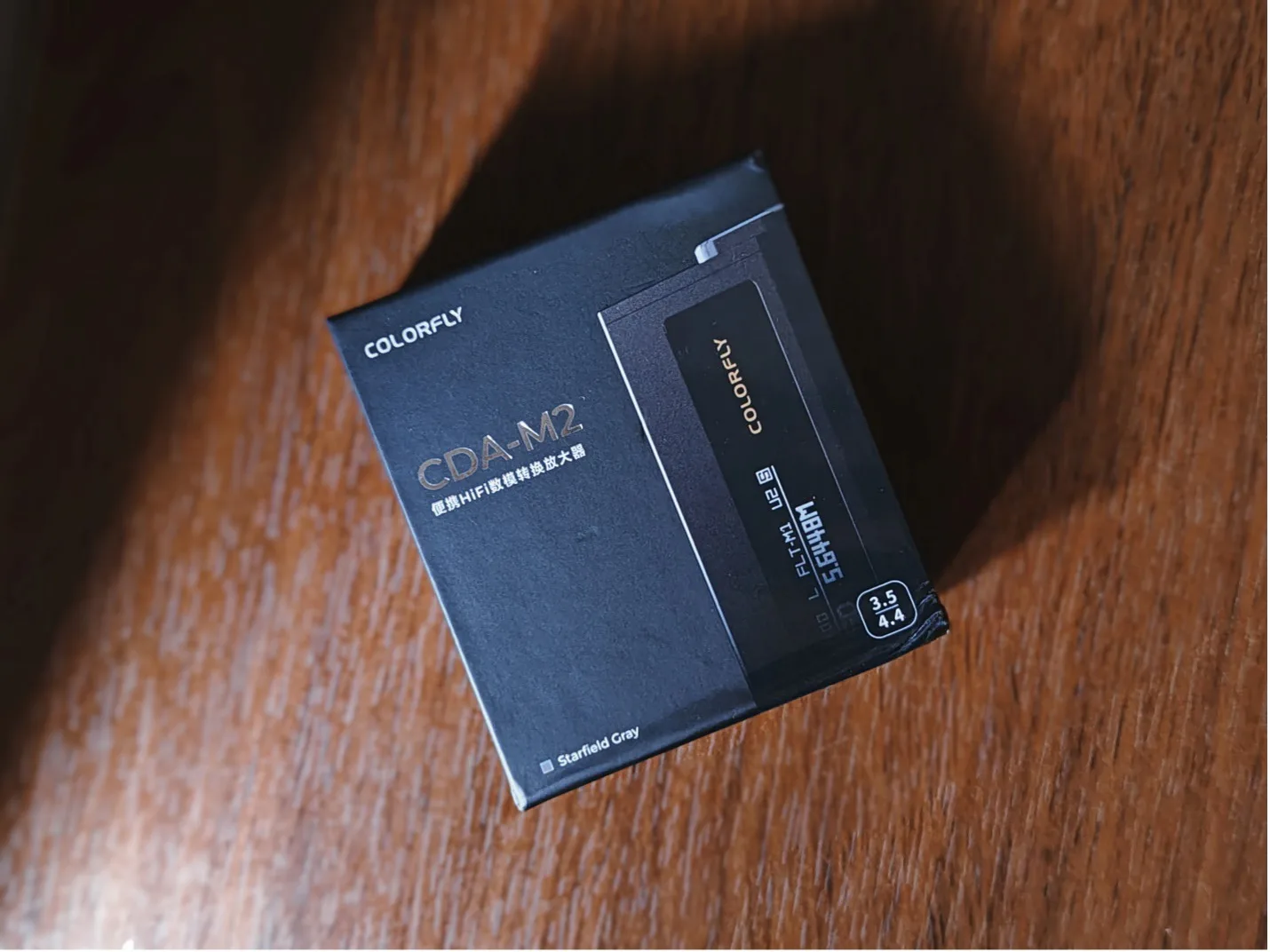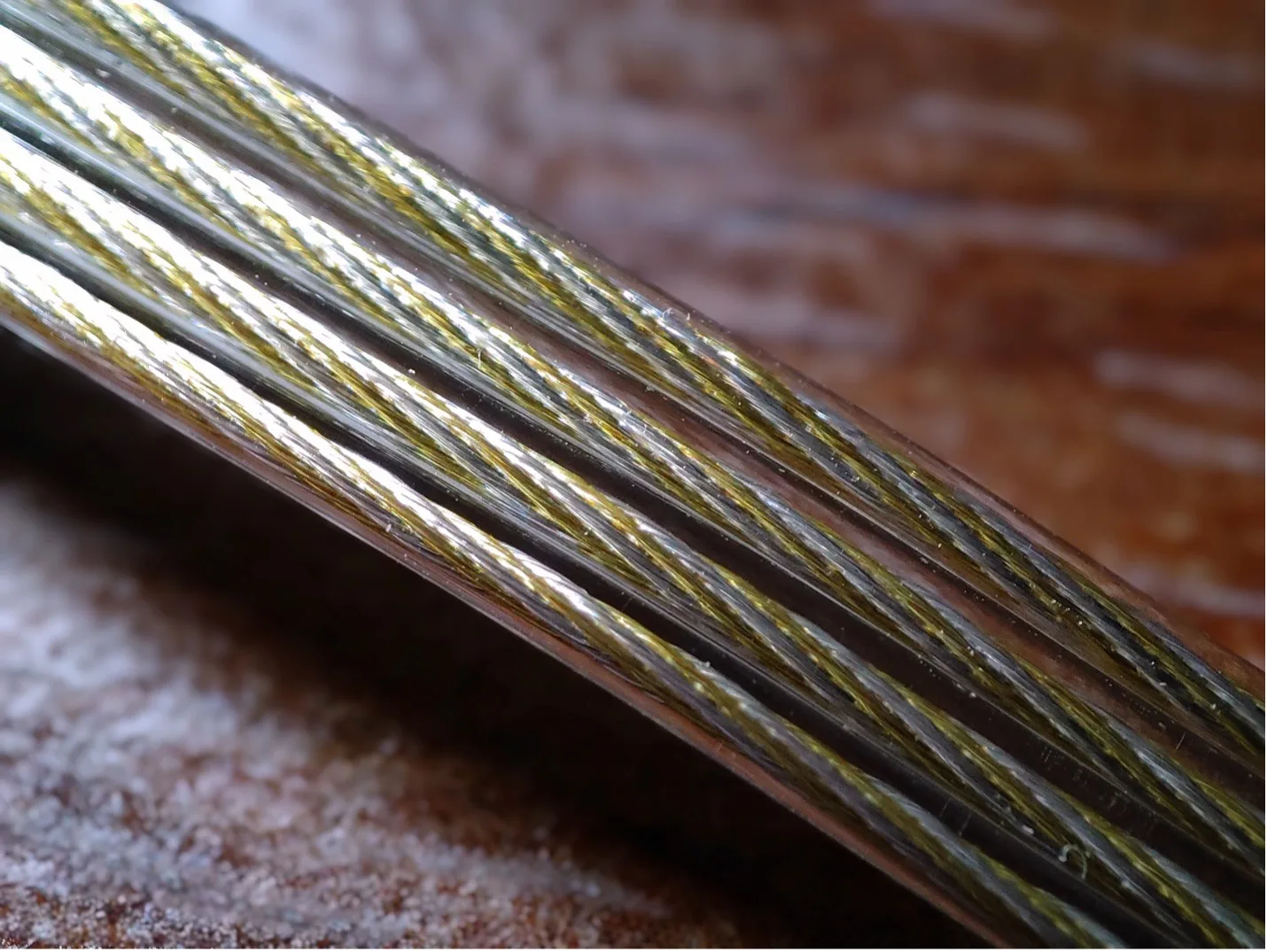Introduction
For whatever reason, Colorfly is probably one of the most obscure Chinese audiophile brands in the international market. However, their expertise lies as a prominent digital audio player (DAP) manufacturer; the likes of the U6 and U8 are quite well received locally. Recently, the company has enjoyed an increase in attention internationally after the release of their ever-popular CDA-M1 and CDA-M1P budget USB DAC dongles. As a successor to those mentioned, the CDA-M2 would be their current premium USB DAC dongle to date, featuring dual flagship Cirrus Logic CS43198 DAC chipsets. However, its mid-tier price tag has brought our attention to an evaluation. Perhaps there is a reason for it?
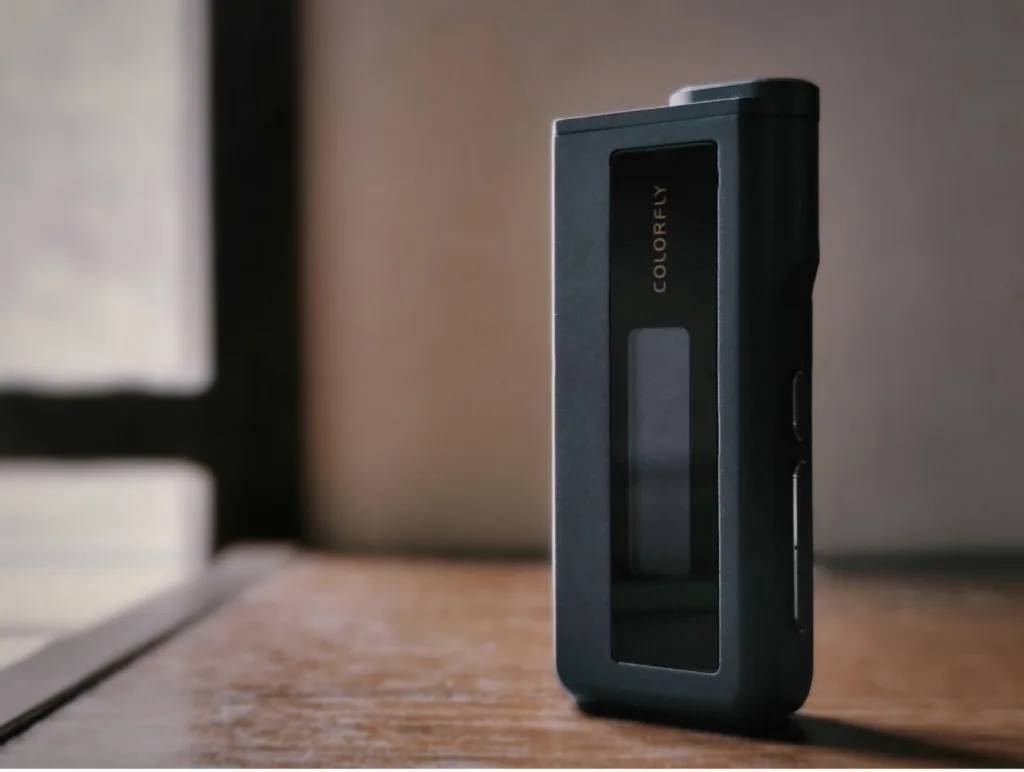
Packaging & Accessories
The M2 has palm-sized box packaging. Some may not like it because of the price tag it comes with. Personally, I like simpler packaging and unnecessary accessories. Inside, we get a short, silver-plated copper USB-C with a similar termination ribbon-like design cable. The design is unique; however, I wonder how long it will turn green due to oxidation. I guess only time will tell. Further, there is a manual and the dongle itself. Apparently, there is also another premium “limited edition” version of the M2, in which you’ll get a purple-colored dongle that comes with a premium DD-Hifi USB-C cable.
Build & Design
Talking about the design, the M2 has a sleek and nice curve design to look at and feels nice when in hand. To achieve this, CNC machining was used on the M2 zinc alloy electroplated body. On hand, the weight is rated at 27 g, which is neither heavy nor light. In terms of purpose, the M2 is definitely better as compared to the ridiculously heavy M1P. Of course, as an aesthetician, you can have different opinions. Finally, the OLED screen, which is the selling point of the M2, is placed alongside the Colorfly word at the center of the dongle.
Aside from the OLED display, the external functions of the M2 are simple, which include volume buttons, a function button, a USB-C input data port, and 3.5mm single-ended and 4.4mm balanced headphone outputs. The OLED screen is used to configure the internal features integrated in the M2. On the default screen, there are volume, gain, filter mode, USB UAC, S/PDIF, and sample rate indicators. By holding the function button for a few seconds, we’ll be able to operate some of the functions offered.


Gain Level:
There are two gain levels you can set, low and high. Both are usable for both headphone outputs.
Channel Balance:
There is an L/R channel adjustment you can make. There are up to 12 levels of adjustment you can make.
Digital Filters:
Just like most other USB DAC/AMP, you can adjust up to five digital filters to in theory alter the sound according to your likeness. As usual, I found that there are hardly any differences between them even after upsampling the source to 384kHz. Except the NOS filter, which kills some minutia of the upper treble. The filter lists as below:
| Digital Filters | |
| Fast LL | Fast roll-off, Low-latency filter |
| Fast PC | Fast roll-off, Phase-compensated filter |
| Slow LL | Slow roll-off, Low-latency filter |
| Slow PC | Slow roll-off, Phase-compensated filter |
| Non OS | Non over-sampling filter |
S/PDIF Mode:
There is a function you can enable to allow the 3.5mm output serves as coaxial output. The maximum voltage for this output is rated at 500mV ± 20% @ 75Ω. Therefore, those who want to connect the M2 into their external amplifier or disc players can do so.
H-DEPOP Feature:
One of the unique features of the M2 is the H-DEPOP noise suppression toggle. Based on the manual, this function prevents unnecessary noise from feeding into your sensitive headphones when there is a switching (play/pause) of the music playback by adding a special hardware controller at the output terminal. Therefore, this function allows the controller to help the analog switch on and off based on the state of the digital transmission it receives. Though this noise is something that rarely occurs, I guess Colorfly decides to integrate this feature as an additional protection layer if it does occur. What is clear to me is that there is no consequential sonic performance when switching on this function.
Display Functions:
Further, there are another three additional functions for the display screen namely display brightness, screen orientation, which is useful, and lastly display time before sleep. Other operations include firmware version display and reset to default setting.
Parameters:
- Digital to Analog Converter (DAC): Cirrus Logic CS43198*2
- Amplification Stage: XR2001*2 op-amp
- Dimensions: 58*25*13.5mm
- Weight: ≈ 27g
- USB Interface: Type C
- Screen: 128*64 OLED
- Signal-to-Noise Ratio: 130dB
- Frequency Response: 20Hz ~ 20kHz
- Dynamic Range: 130dB
- Maximum Power Output: 125 mW @ 32Ω (single ended), 250 mW @ 32 Ω (balanced)
Retail Price & Where to Get
Thank you, Starpickers Audio Library, for providing the Colorfly CDA-M2 with the review unit. The Colorfly CDA-M2 is available at Starpickers Audio Library here:
Official Store : https://starspickeraudio.net/products/colorfly-cda-m2
Test Tracks
Audio Chain
Android 13 / Windows 11 > Colorfly CDA-M2 > IEMs
Sound reference: Topping DX3 Pro+ (NFCA topology)
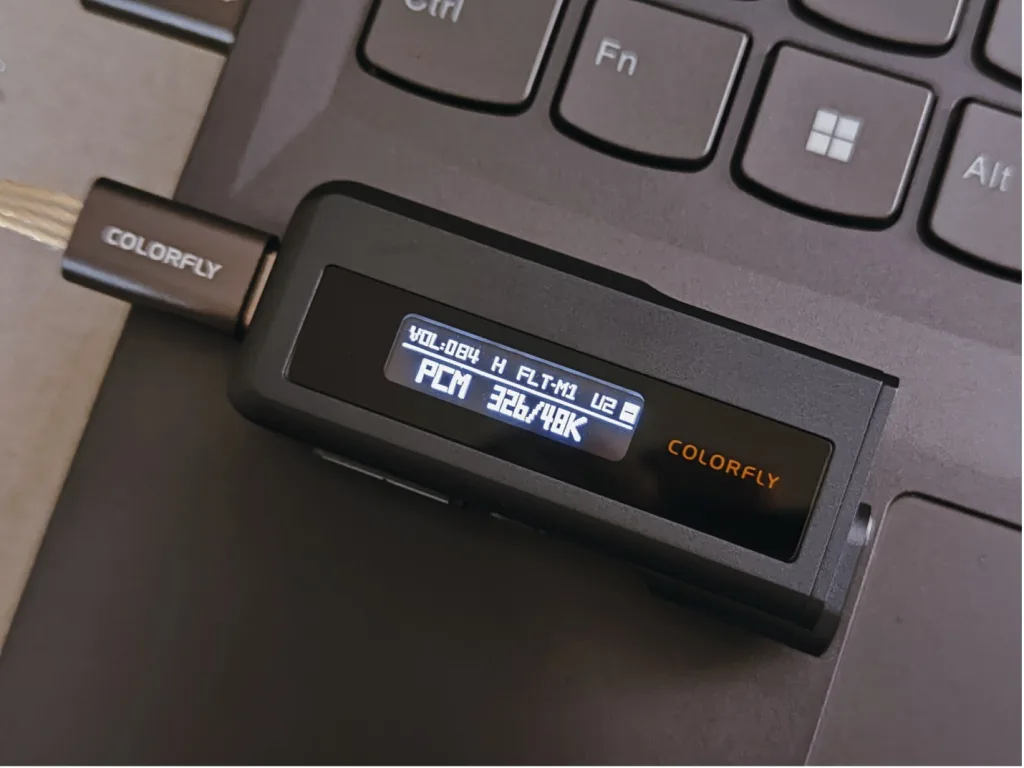
Sound Quality
Tonality
For the sake of transparency, I find that the M2 sound tuning does not fit my preferences and tastes. There are two reasons for this, namely, the CDA-M1P legacy and the tuning execution. Referring to the first reason, my expectation for M2 was slightly upset by the discontinuation of the legacy sound signature of the CDA-M1P. The reason why the M1P was so well received was because of its somewhat “rich-analog-natural” (whatever you want to call it) sound profile coupled with impressive technical performance with respect to its price tag. In my opinion, Colorfly should’ve kept that tuning for the M2 while making improvements to the technicality’s performance. If we look at the specification, nothing in the amplification stage in the “Colorfly U Audio Framework” has majorly changed; instead, Colorfly simply swaps the AKM 4493SEQ chip with CS43198 chips, since a better DAC equals better sound, right? Well, this leads me to the next reason.
There’s no denying the M2 has an impressive technical chop, especially the instrument separation, possibly due to the “better” DAC. However, the other aspects are pretty lackluster, including the sound profile. The tuning of the M2 opposes the M1P by being more “mature-neutral-HiFi” in their approach, which I don’t really mind. However, the execution is not exactly great. While the subbass extension is quite good, the overall bass quality lacks transient and falls flat in terms of its dynamics, be it macro or micro. This translates to the rest of the frequencies as well. As such, the midrange sounded odd when there was some recession, probably in the 500 Hz to 2 kHz region. In other words, they were positioned quite backwards, or “distantly,” compared to the bass and treble, resulting in the instrument and vocal sounding unnatural and lacking in their note definition, for example, in a snare instrument.
Moreover, the treble has a sudden coloration, maybe in the 8 to 10 kHz range, to artificially make cymbals and percussive sounds saturated and bright. Also, accompanied by a lack of upper treble extension, the treble can be sibilant sometimes and too soft at the top simultaneously. Whether this is because they were intentionally tuned this way or perhaps because of distortion in certain frequencies that causes the effects of higher-order harmonics or overtones is unknown to me for now. This also prevents me from turning the volume higher, especially with vocal music, to compensate for its soft dynamics.
Technical Performance
As mentioned, the instrument separation of the M2 is excellent considering its price tag. Each instrument in the mix can handle even complex and fast music easily. This is also true for the resolution, but the tuning issue may interfere with some of the macro-details and texture that are meant to be portrayed. Micro-details are average because of the lack of air in the upper treble frequency. This leads to imaging and its subset, soundstage. Unfortunately, the imaging of the M2 felt two-dimensional in the grand scheme of things, for which there is a lack of localization in the vertical and depth axes. However, the lateral or stereo staging is quite far-reaching or emphasized. On timbre, the M2 is not the most natural-sounding DAC, again dismantling itself from the M1P legacy, but rather slightly digital. To wrap up the sound quality, the M2 has an unbalanced frequency response upon listening due to its overdone midrange and treble tuning in spite of the impressive sound separation.
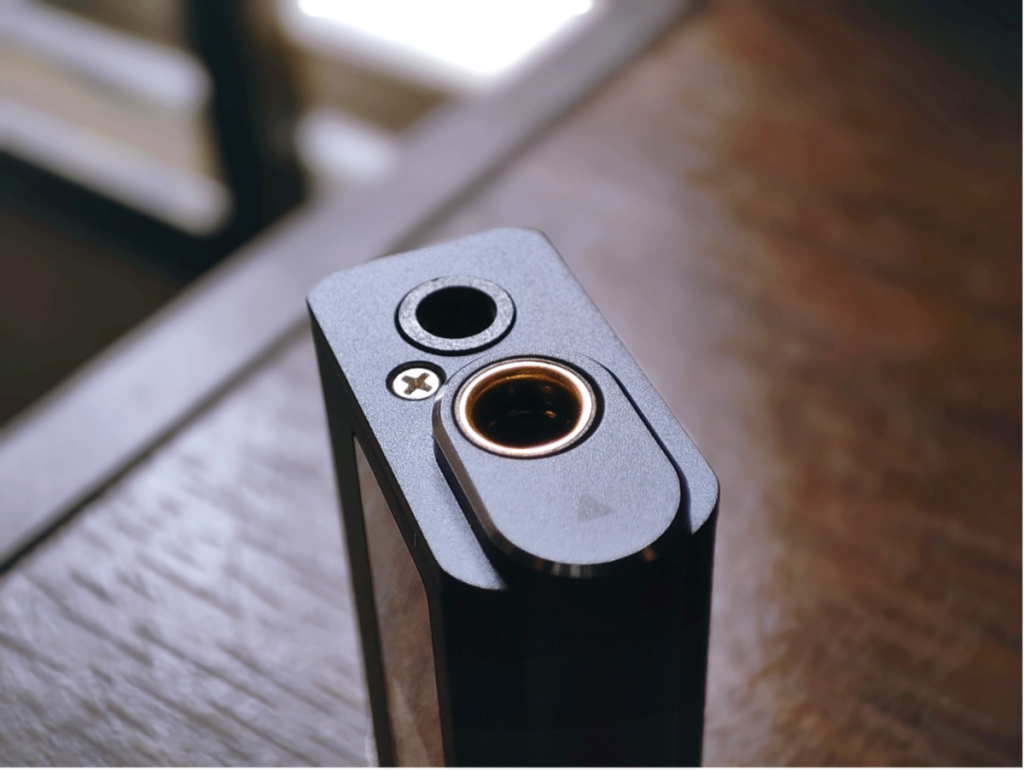
Power Performance
As a disclaimer, I mainly tested the M2 with IEMs. Power-wise, the M2 is one of those dongles with an average amount of power output (250 mW max). Nothing crazy, but not weak either. You’ll get a higher power draw if you connect to a laptop or PC compared to a smartphone. For instance, with balanced output and high gain, my typical listening volume is 20–75 steps if connected to a smartphone. Whereas, with a laptop, it usually takes 10–50 steps. Although I didn’t test it with headphones, my guess is that most headphones should have no problem being driven by the M2, except maybe those top-end planar driver ones. In terms of battery draw, my smartphone battery (4500 mAh) dropped ~10% by one hour of usage (at high gain and 4.4mm output). Therefore, you’ll probably get about 10 hours of operation before needing to charge your smartphone. And that’s more than enough to listen to music—at least with my particular smartphone’s battery. When being utilized, the M2 has great temperature control, meaning it never gets hot but just mildly warm.
Synergy
I found that when pairing the M2 with bassy or fun while having good technicalities, IEM has the best synergy. This is to compensate for the lack of dynamic and poor staging of the M2. Planar IEM like Kefine Klanar and Letshuoer S15 would be a great pair due to their warm-tuned nature. The former, though, can be a little bit intense in the treble. Another great pairing is with the Audiosense DT200, as they are neutral-warm with very smooth tuning in the treble. Single-dynamic driver IEMs such as Tanchjim Oxygen and Moondrop Aria 2 are quite good as well. Lean and bright-ish IEMs such as Tanchjim Zero are not a great combination for me.

Sound Comparison
Colorfly CDA-M1P
The impressive smaller brother, M1P. Contrary to the M2, the much cheaper M1P has a warmer and more organic presentation. Tonally, it is more correct to my ears because the midrange is correctly positioned and harmoniously played with the bass and treble. The sound is more engaging, with a better sense of dynamic. The resolution is a downgrade, although not by much. But the instrument separation is noticeably poorer. On imaging, it’s a bit complicated because the M1P has more complete staging but is more intimate. Meanwhile, the M2 has better stereo imaging but lacks the dimensionality and depth of the M1P. In simpler words, M1P has smaller 3D staging, whereas M2 has wider 2D staging. If looking at the perspective of M1P owner who is looking for an upgrade, don’t be too excited just yet with the M2.
Cayin RU6
The Cayin RU6 was released quite a while ago, but they are still quite popular amongst enthusiasts, mainly because of their unique R-2R ladder DAC technology. While the price remains steep compared to the M2, the sound quality is not as great from a technical standpoint. Partly because of their age, but partly also because of their analog sound profile coming from the R-2R DAC. Even when comparing both with the NOS filter, the RU6 sounds warmer, smoother, and less dynamic. In my opinion, if you’re looking for this classic sound, the M1P is a better choice, or perhaps the newer RU7 and Hiby FC6, although I have yet to test those.
Moondrop Moonriver 2 Ti
Costing 30 USD more, the M2Ti is a somewhat unpopular USB dongle DAC, for whatever reason. While having the same DAC configuration as the M2, in comparison, they are more neutral and quite impressive in terms of technical prowess. While I prefer the tonality of the M2Ti, both trading blows in terms of technicalities. While the M2Ti has stronger dynamic and staging depth, the M2 has stronger instrument separation.
Aune Yuki
The latest from the bunch, the Yuki, is also 30 USD higher than the M2. But what is interesting is that the Yuki offers discrete amplifier circuitry that is usually available in high-end desktop DAC/AMP such as those from Schiit Audio, Audio GD, Ferrum Audio, Chord Electronics, and many others. So, a welcome departure from typical op-amp-based amp design, like in most dongle DACs. Having said that, the Yuki is definitively a league above the M2 in terms of overall sound quality. The sense of three-dimensional imaging and large staging are fantastic. The transient response is better and accompanied by excellent extension at both ends. To my ears, the sound is more colored than the M2, with much more natural timbre as well.
EPZ TP30
The TP30 is a budget DAC dongle that is priced around the same ballpark as the M1P. An ESS ES9038Q2M-based DAC is a highly popular choice for a lot of audio brands. In comparison, the TP30 shares a similar sort of sound as the M1P instead of the M2, but with more colored bass and treble. The timbre is more natural with the TP30. Imaging is similar as compared to M1P, but resolution and instrument separation go to M2.
Questyle M12
The elegant-looking M12 is currently priced similarly, if not cheaper, to the M2. Like the Aune Yuki, they are slightly different from others in terms of amplification topology, for which Questyle is quite known for their system-in-package (SiP) current mode amplification. Though the technology is attractive, the sound they offer has been out of date, particularly in terms of technical performance. However, the tonality and timbre are still good, which makes them sound more balanced and natural and overall better than the M2, to my preference.
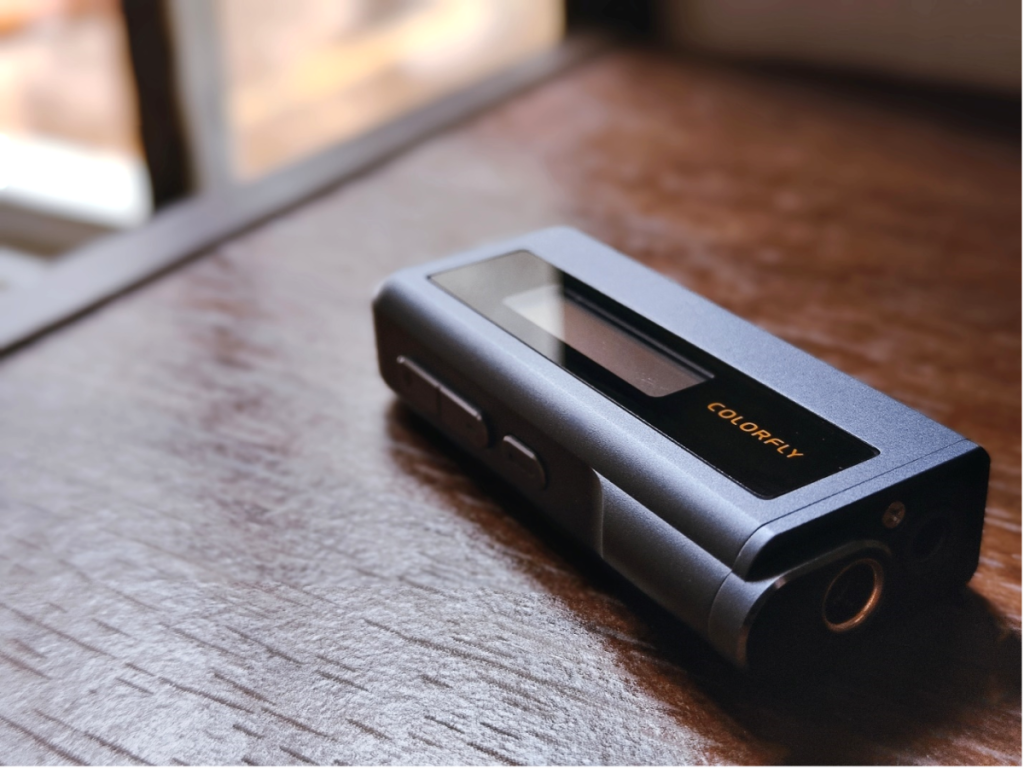
Conclusion
The popularity of Colorfly’s CDA-M1P has confidently raised the expectations of the masses towards the CDA-M2. In my humble opinion, the M2 might not be what the masses ought to be. It didn’t continue the legacy sound of the M1P, which is loved by many, including me. The literal swapping of DAC chips strategy by Colorfly seems unsuccessful, but then ironically further disproves the common myth that “premium DAC equals better sound.” Maybe it’s time again for me to reiterate that the analog section matters too. Of course, you can disagree and may feel differently about the CDA-M2, and perhaps unit variation might be a factor as well since this is a review unit. But at the very least, the CDA-M2 offered adequate features like nice OLED screen and solid ergonomics while may still sonically appeal to some, for what it’s worth.






